The week at a glance
- Brace of Ivory Gulls together in Northumberland
- Further Ivories in Highland and on North Uist
- Baikal Teal still in Lancashire
- Pied-billed Grebe on North Uist
- Melodious Warbler in Dorset
- Further Parrot Crossbills discovered
Despite some great birds again discovered around Britain and Ireland, the week's news was dominated by the appalling coastal flooding around our coasts, causing extensive damage to many of Britain's most famous east-coast reserves — you can read much more on the events in an article on the BirdGuides webzine.
From an ornithological perspective, the week will be remembered for an impressive influx of Ivory Gulls. Four birds were found: the first, in entirely typical setting, was a juvenile attending a seal carcass at Baleshare, North Uist (Outer Hebrides) during the afternoon of 4th. However, the following day's storm and exceptional tide displaced the bird's chosen food source and, as a result, it was not seen again. During the storm on 5th, another juvenile flew south past Tarbat Ness (Highland), though again it failed to linger. After last week's fly-by in Durham, surely it was about time one became accessible? Cue early afternoon on Saturday 7th: Northumberland birder Gary Woodburn was checking his local gull flock on the golf course at Seahouses when a juvenile simply appeared in front of him. It showed well for the rest of the afternoon until, quite astonishingly, arriving birders located a second individual in the area. For a brief period late in the day, both sat together on rocks off Beadnell village, providing many with a once-in-a-lifetime opportunity to observe and photograph this magnificent multiple occurrence — indeed, the first time that it has happened in England since two on the Hayle Estuary (Cornwall) in 1907! But, as it turned out, only those within striking distance would score: despite at least one being observed into the darkness and extensive searching throughout Sunday, neither could be found in the wider area. The remarkable events in Northumberland also overshadowed the week's fourth — another brief juvenile — that spent a matter of minutes in the harbour at Boddam (Aberdeenshire) on Saturday afternoon. This mini-influx was reflected elsewhere in the North Sea, with further juveniles found in Sweden and Norway.
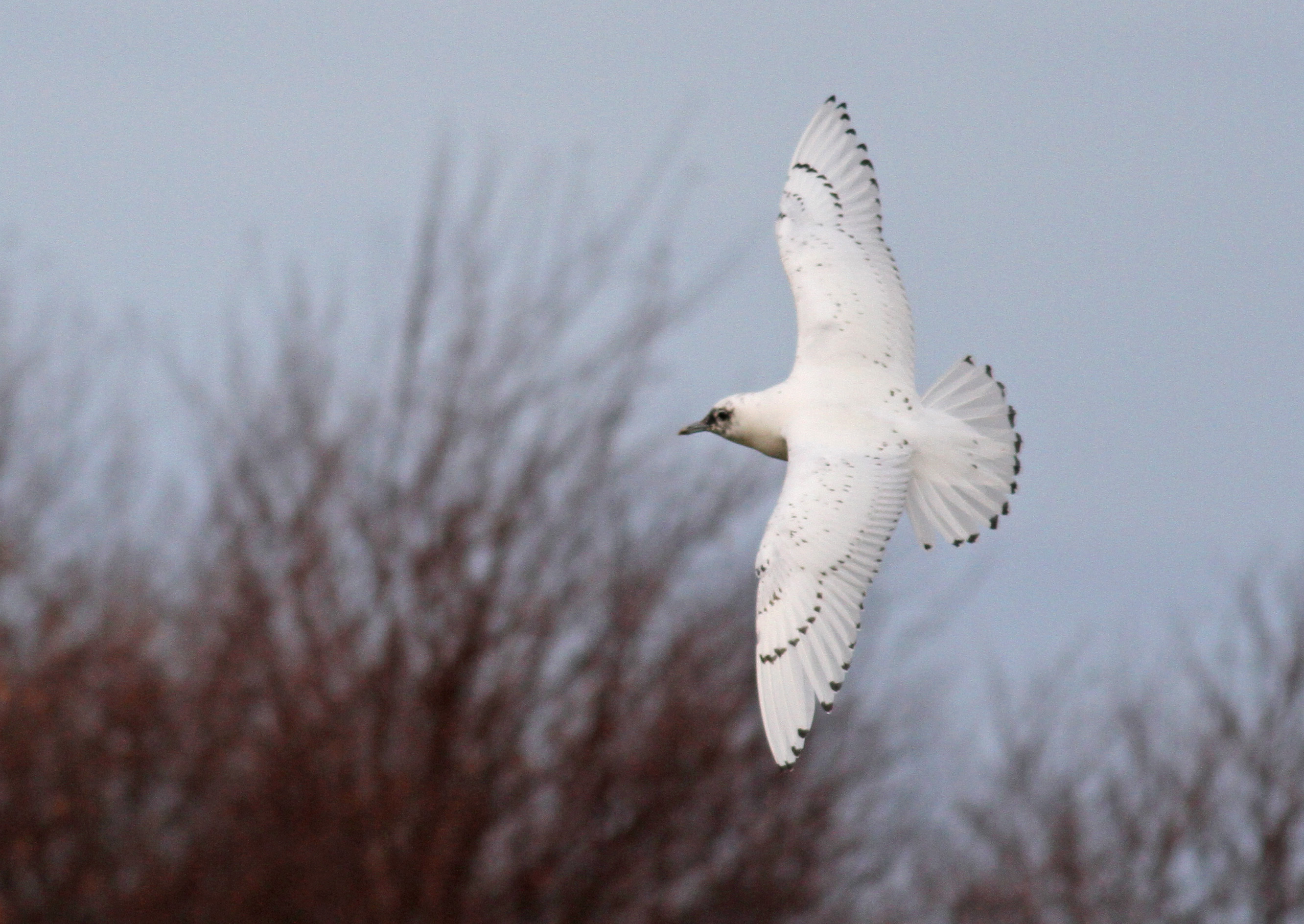
Ivory Gull, Seahouses, Northumberland (Photo: Harry Murphy)
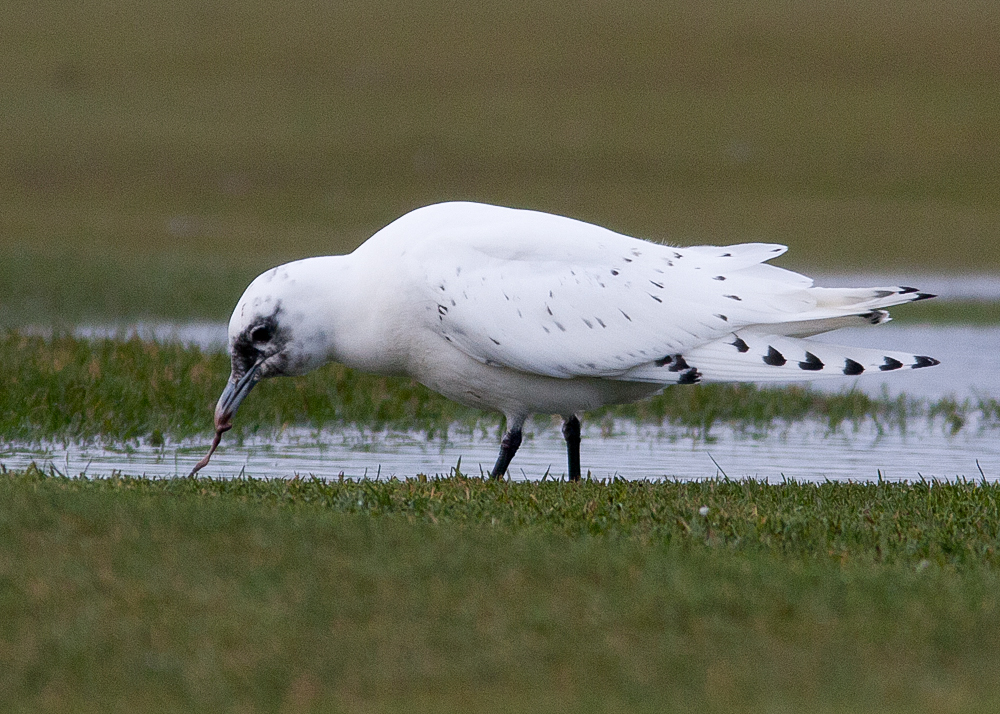
Ivory Gull, Seahouses, Northumberland (Photo: Gary Woodburn)
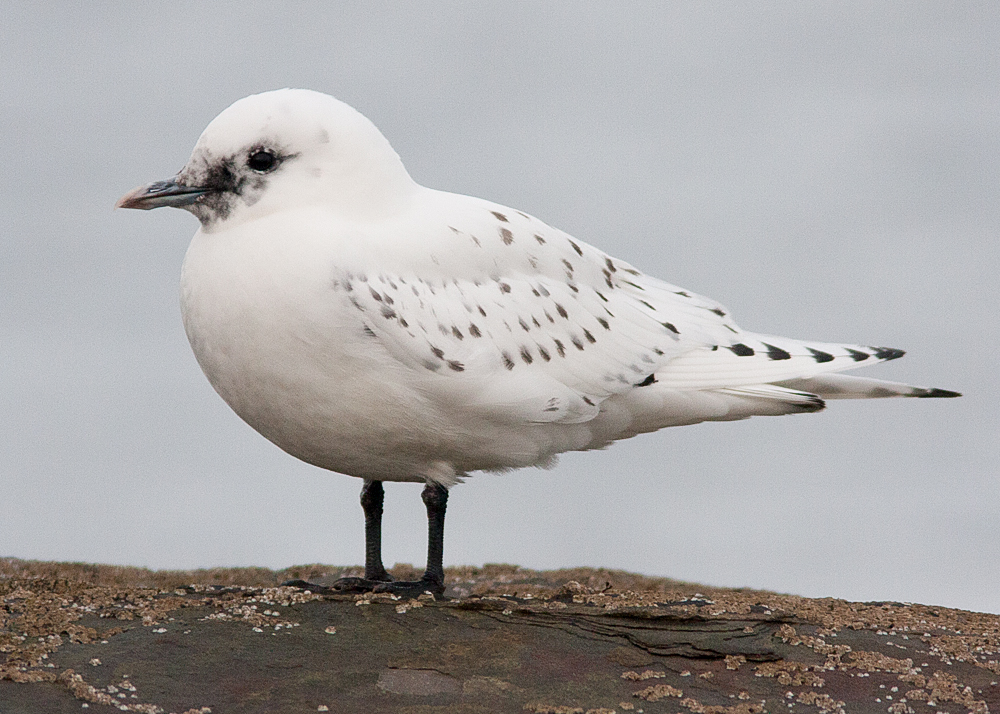
Ivory Gull, Beadnell (village), Northumberland (Photo: Gary Woodburn)

Ivory Gull, Baleshare, N.Uist, Outer Hebrides (Photo: Ian Thompson)

Ivory Gull, Sweden (Photo: Morten Scheller Jensen)
Negative news on the Scilly Caspian Stonechat laid to rest any hopes that it might overwinter on the archipelago, and there was again no sign of the Pacific Diver in Cornwall — though a probable was reported sporadically off Worthing (W Sussex) on 8th–10th. New in was a Pied-billed Grebe at Balranald, North Uist (Outer Hebrides) from 6th, continuing the pulse of records in recent years. Meanwhile, in Lancashire, the drake Baikal Teal continued to perform well with Wigeon either on Crossens Outer Marsh or Marshside reserve throughout the week.

Baikal Teal, Marshside RSPB, Lancashire (Photo: Jim Almond)
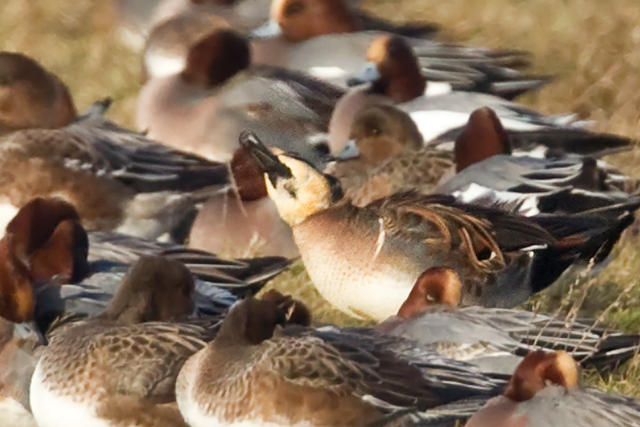
Baikal Teal, Marshside RSPB, Lancashire (Photo: Colin Bradshaw)
A small Barnacle Goose flock near Doonbeg (Clare) contained one Todd's and two Richardson's Canada Geese, no less. Black Brant reports came from Cumbria, Suffolk, Essex, Dorset (2+) and County Sligo, while four Snow Geese included the two birds still in Argyll, the blue morph at Mains of Ballindarg (Perth/Kinross) on 4th and the white morph at Carrahane Strand (Kerry).

Snow Goose, Mains of Ballindarg, Angus & Dundee (Photo: Stuart Green)
County Mayo's Black Duck was once again reported — alongside hybrids — on Achill Island on 8th. Just two American Wigeon were also in the Emerald Isle: drakes still at Lough Neagh (Armagh) on 7th and Tullaghan (Leitrim) on 8th. A female Blue-winged Teal graced North Ronaldsay (Orkney) on 5th–8th, with one of the week's eleven Green-winged Teal also seen on the island. Scotland bagged a total of six Green-wings, with others in Aberdeenshire, Perth/Kinross (2), Fife and Dumfries & Galloway, while two at Tacumshin (Wexford) were the only Irish records. Drakes were also in Rutland, Somerset and Norfolk.
Just three Lesser Scaup were reported this week: females still at Kilaulay (North Uist) and Ballyconneely (Galway), and the drake still at Cardiff Bay (Glamorgan). A drake Ring-necked Duck was on Achill Island (Mayo) on 8th, the only other reported being the drake on Lough Leane (Kerry). The drake King Eider was relocated off Nairn (Moray/Nairn), while two drake Surf Scoters north past Winterton (Norfolk) on 4th were the pick of the records of that species — twos were still off Morfa Bychan (Gwynedd) and Llanddulas (Conwy), and the juvenile remained in Brand's Bay (Dorset) to at least 7th.
A somewhat unseasonable record of White Stork concerned a flyover at West Marden (W Sussex) on 6th. The Buckinghamshire Cattle Egret continued to roost at Calvert Lakes, though its daytime haunts were discovered near Steeple Claydon on 7th — others were seen in Kent and Norfolk. A typical scattering of Great White Egrets included three still at Pitsford Reservoir (Northants), two still at Hornsea Mere (E Yorks) and several in the Dungeness area of Kent. There appeared to be another minor influx of Glossy Ibis this week: one was on St Mary's (Scilly) on 7th–8th, two were on the Hayle Estuary (Cornwall) on 8th–9th and further brief singletons were noted in the county at Marazion, St Merryn and Helston Loe Pool. Further new individuals were at Ballycotton (Cork) on 7th and St Florence (Pembrokeshire) on 10th, with records also coming from Kent, Norfolk and Gloucestershire.

Great White Egret, Hornsea Mere, East Yorkshire (Photo: Chris Downes)

Great White Egret, Pickerings Pasture, Cheshire (Photo: Rob Cockbain)
A white-morph Gyr Falcon was seen a couple of times at Clahane Strand (Clare) on 4th, while what is presumably the same wandering Kentish Black Kite was reported over Samphire Hoe on 4th and Sandwich Bay on 6th. At least one Rough-legged Buzzard was back at Haddiscoe Marshes (Norfolk) from 7th, with further reports from Cleveland, Suffolk and Essex.
The American Golden Plover was last seen at Sennen (Cornwall) on 5th, though the Pectoral Sandpiper was still on Lough Neagh (Armagh) to at least 6th and the Lesser Yellowlegs was at Lepe Country Park (Hants) all week. A smattering of Grey Phalarope records included lingering birds at Walberswick (Suffolk) and Hornsea Mere (E Yorks).
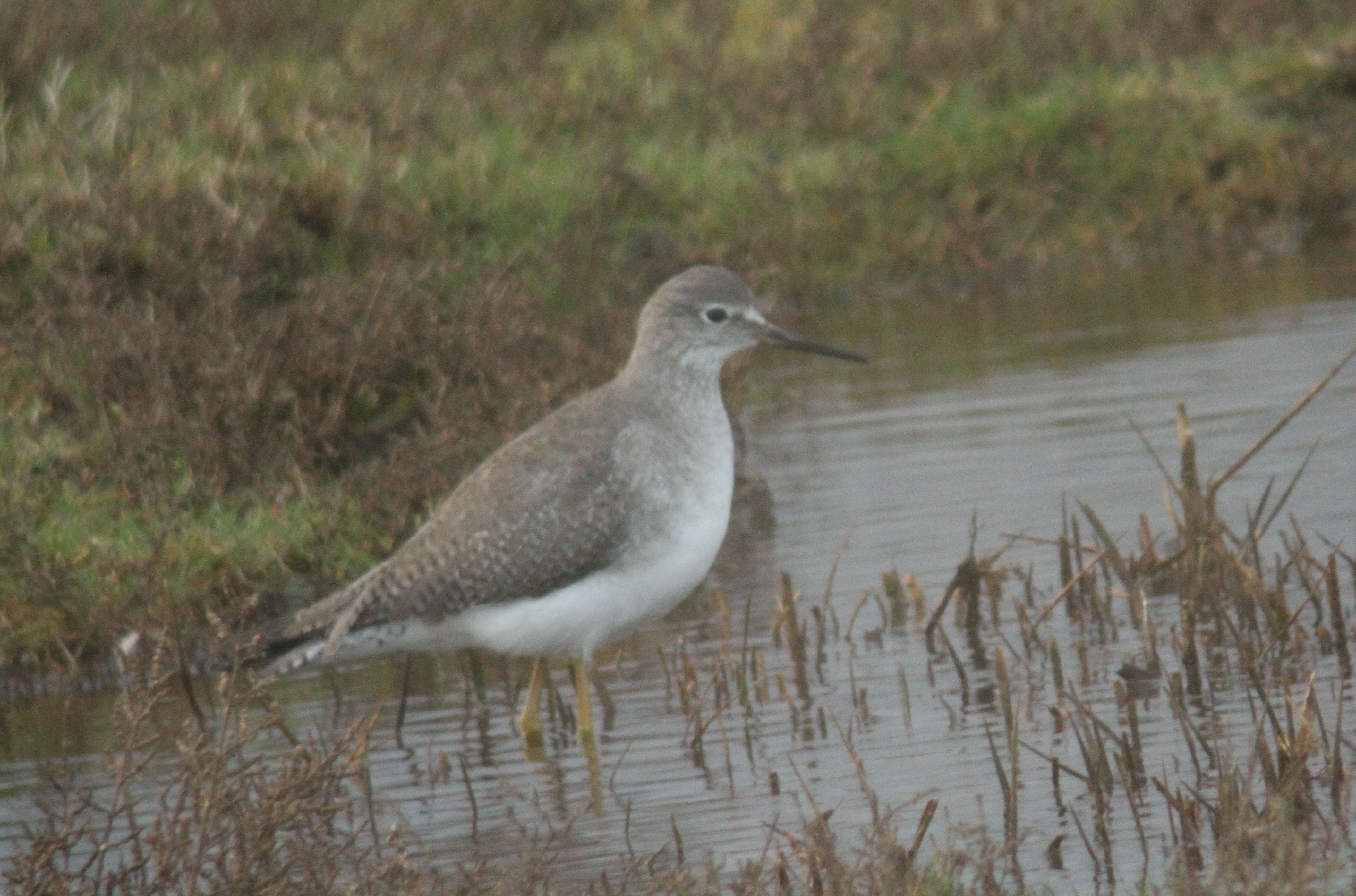
Lesser Yellowlegs, Lepe CP, Hampshire (Photo: Mark Leitch)

Grey Phalarope, Walberswick, Suffolk (Photo: Chris Darby)
Familiar faces were the continuing Bonaparte's Gull at Dawlish (Devon) and the Forster's Tern at Nimmo's Pier (Galway); 15 Ring-billed Gulls included an improved six reported from around Britain. In Dorset, a brief first-winter was at Swineham Gravel Pits on 8th and an adult was at Radipole Lake on 10th. A first-winter was reported from North Uist, a brief adult was in Doonfoot (Ayrshire) on 7th and long-stayers remained in Highland and Hampshire. In Ireland, the only multiple occurrences again came from Tralee (Kerry) and Nimmo's Pier (Galway). Meanwhile, a reasonable start to December for white-winged gull records — no doubt influenced by the week's stormy weather — saw Glaucous and Iceland Gull records widespread from Shetland south to Sussex. However, the only Kumlien's Gull reported was the returning second-winter in East Yorkshire.

Ring-billed Gull, Tralee, Kerry (Photo: Ed Carty)

Ring-billed Gull, Nimmo's Pier, Galway (Photo: Tom Cuffe)

Iceland Gull, Ardersier, Highland (Photo: Marcus Conway — ebirder)

Iceland Gull, Hartlepool Headland, Cleveland (Photo: Harry Murphy)

Glaucous Gull, Green Island, Isles of Scilly (Photo: Joe Pender)

Glaucous Gull, Peterhead, Aberdeenshire (Photo: Peter Stronach)
A Hoopoe in Abergele (Conwy) from 8th was a significant midwinter record in itself, but was topped by remarkable news of a Melodious Warbler in Winspit Valley (Dorset) from 6th onwards. A little more expected at this time of year are Hume's Leaf Warblers, and the Lincolnshire bird was still at Gibraltar Point on 4th and another was in a private garden in north Northamptonshire on 6th–10th. Up to ten Yellow-browed Warblers included up to three on St Mary's (Scilly), with others in Cornwall and Dorset. The Rose-coloured Starling continued in Caister (Norfolk) all week, and two Serins were on Scilly.

Hoopoe, Abergele, Conwy (Photo: Tony Pope)
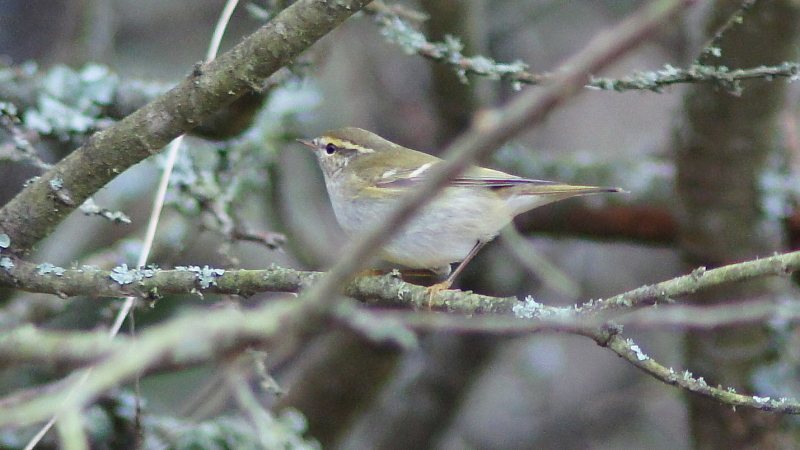
Yellow-browed Warbler, Gunwalloe, Cornwall (Photo: Steve Bury)

Hume's Leaf Warbler, Gibraltar Point NNR, Lincolnshire (Photo: Mick Widdowson)

Rose-coloured Starling, Caister-on-Sea, Norfolk (Photo: Carl Chapman)
A flock of 13 Parrot Crossbills was discovered at Budby Common (Notts) on 8th, rising to 14 by 10th. Ten were at Mayday Farm (Suffolk) on 8th, with two still there the following day. Two were in the Goyt Valley (Derbys) on 6th, a dozen at Holt (Norfolk) on 4th had declined to nine by 8th, and at least one remained in Hemsted Forest (Kent). Seventeen Two-barred Crossbills were again in the Forest of Dean at Serridge Ridge (Glos) on 10th, with up to nine again at Broomhead Reservoir (S Yorks), four in the Wyre Forest (Shropshire) and singles still at Lynford Arboretum (Norfolk), Leith Hill Wood (Surrey) and Hemsted Forest (Kent).
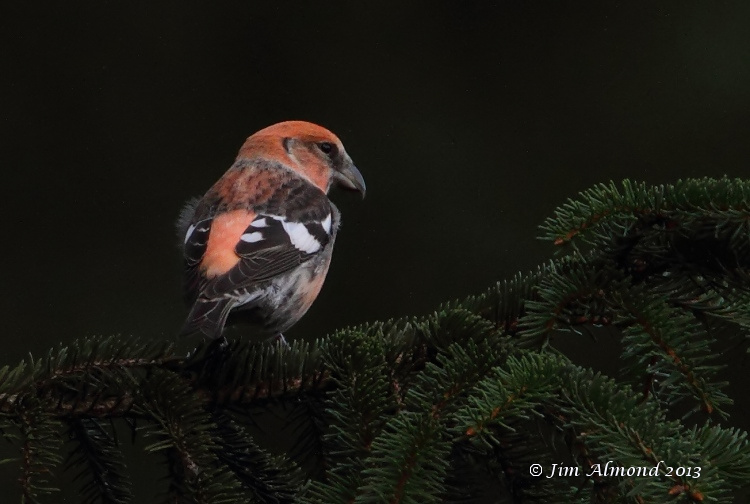
Two-barred Crossbill, Wyre Forest, Shropshire (Photo: Jim Almond)
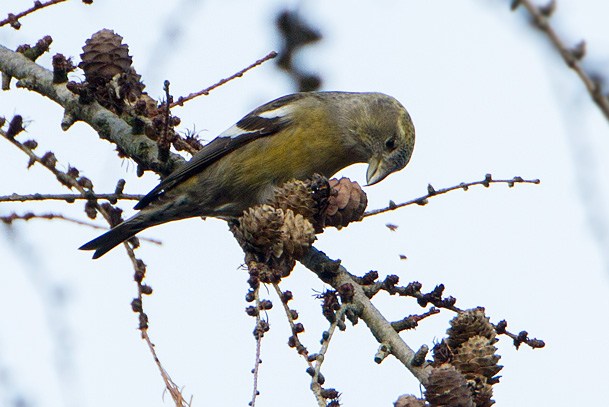
Two-barred Crossbill, Wyre Forest, Shropshire (Photo: Peter Walkden)
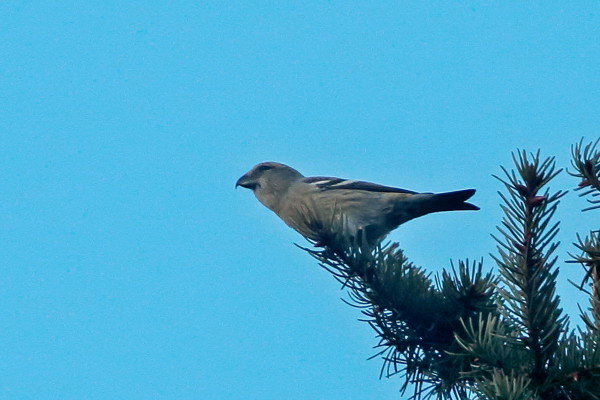
Two-barred Crossbill, Broomhead Reservoir, South Yorkshire (Photo: Dave Kelsall)
Photo of the Week

Ivory Gull, Beadnell (village), Northumberland (Photo: Gary Woodburn)
Through our Photo of the Week selections and captions, we try to highlight the many reasons why a bird image can be 'special'. One of the benefits of photography in general is its ability to record events, especially where those events are unusual or newsworthy. In the world of birding, such events typically relate to the appearance of birds where they are only rarely seen. In the UK, any arrival of an Ivory Gull is regarded by birders as a significant event but, this week, the simultaneous visit of two to a site on the Northumberland coast was a true one-off. Local birder Gary Woodburn colourfully relates the story of how he found and photographed these birds on his blog. In practice, taking a decent photo of two birds at the same time is much harder than it sounds, so Gary's well-composed shot of the two juvenile gulls 'arranged' on the rocks in mirrored poses with the sea as a backdrop was an against-all-odds achievement. We are delighted to award Gary his first Photo of the Week for capturing the moment so perfectly.
Other notable images

Sparrowhawk, Laurieston, Dumfries & Galloway (Photo: Mike McKenzie)

Red-breasted Merganser, Fife Ness, Fife (Photo: John Anderson)

White-tailed Eagle, Poland (Photo: Chas Moonie)

Audouin's Gull, Spain (Photo: Mick Southcott)

Purple Sandpiper, Rhos-on-Sea, Conwy (Photo: Bob Garrett)

Kestrel, Parkgate Marsh/Gayton Sands RSPB, Cheshire (Photo: Maxwell Law)
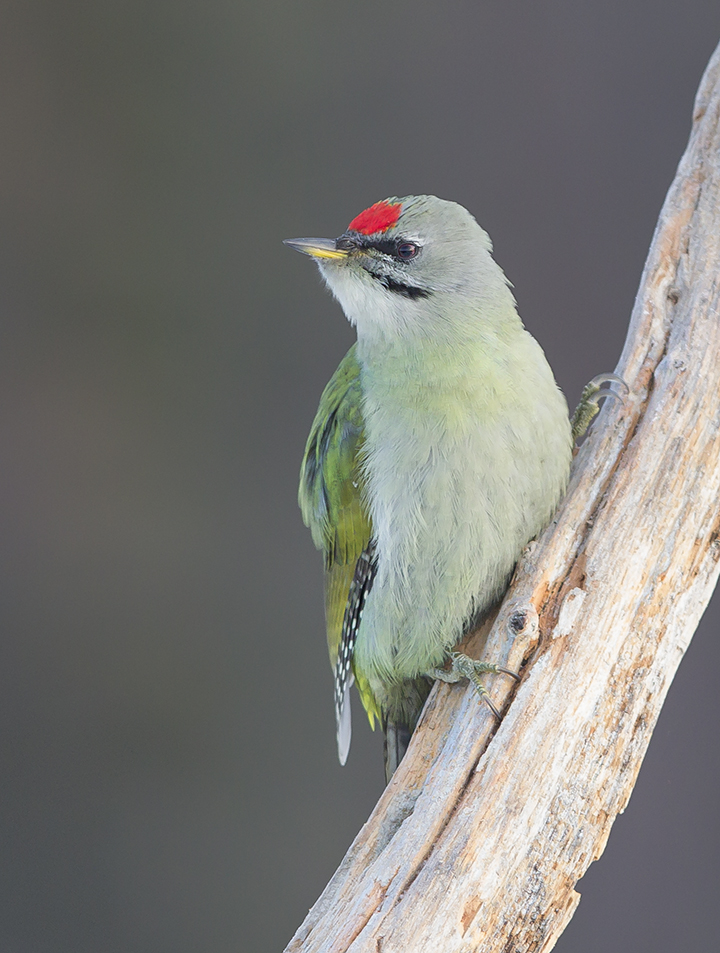
Grey-headed Woodpecker, Sweden (Photo: Ron Mccombe)

Peregrine, Hoylake, Cheshire (Photo: Charles Farnell)

Collared Dove, Rayne, Essex (Photo: Mark Bicknell)


